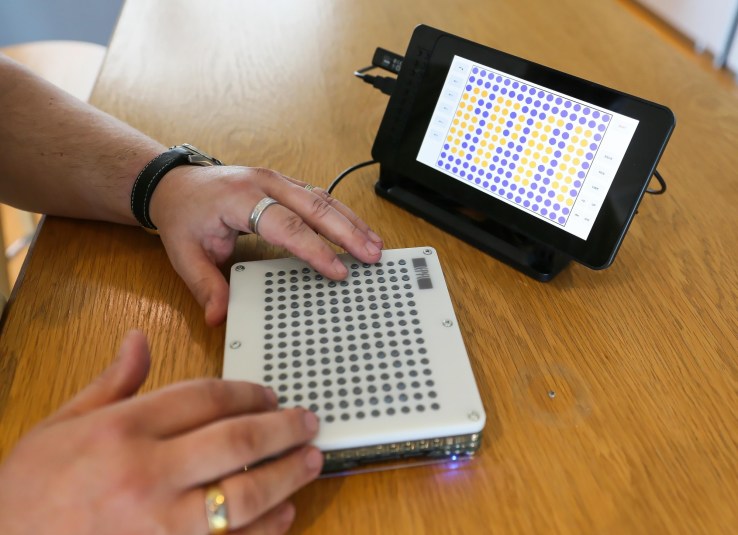
It’s truly amazing, the wealth of information we all have at our fingertips — that is, of course, unless your fingertips are how you have to access that information. An innovative new tablet[1] that uses magnetically configurable bumps may prove to be a powerful tool for translating information like maps and other imagery to a modality more easily accessed by the visually impaired.
The tablet, unnamed as yet, has evolved and improved over the past few years as part of Europe’s Blindpad project[2], which aims to create a cheap, portable alternative to touchscreen devices. It’s developed by researchers at the École polytechnique fédérale de Lausanne.
The latest prototype is about the size of a thick iPad mini, and it uses a clever mechanism to raise and lower the bumps that form images, letters, or Braille (although they’re rather large for it). Each little bump is attached to a magnet; the magnet is always attached to one of two steel layers, and can be switched by running a current briefly through an adjacent coil. Like an e-paper screen, no power is required to keep it in its current position, making it very efficient.The process is quick enough, though, that the dots can animate or vibrate for feedback, and could detect being pressed or glided over by a hand.
The idea isn’t to create a Kindle for the blind, however; Braille displays must be much higher density. The Blindpad tablet has 12 rows and 16 columns, for a total of 192 potential bumps, “taxels” as some have called them. That’s much better suited to things better shown than described.
“People can read with a Braille display, and detect nearby obstacles with a white cane,” said...
Read more from our friends at TechCrunch